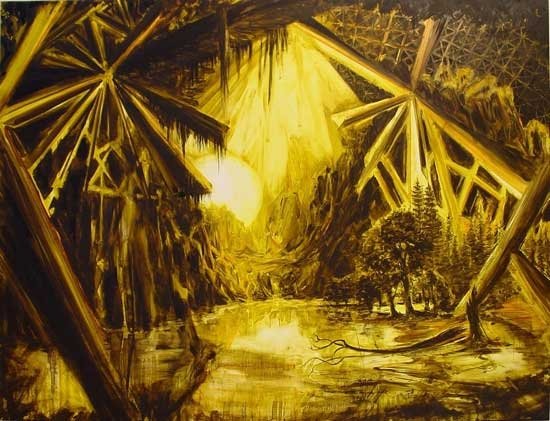Ad Infinitum
dal 18/3/2009 al 18/4/2009
Segnalato da
18/3/2009
Ad Infinitum
Vegas Gallery, London
Part I. The works on show share a certain disillusion, questioning or even disinterest in the sense that entirely humanistic narratives of meaning remain sufficient or tenable to account for the contemporary condition. Curated by Ken Pratt.

Curated by Ken Pratt
In recent years there has been much curatorial preoccupation with the
reemergence of gothic sensibilities and dark iconography within contemporary
visual art. Curators have grouped the work of a broad range of artists
together and asked us to consider this tendency – with its deathly
preoccupations- from various positions. Often it has been from the position
in which the tendency denotes, curators postulate, an overall disillusion
with positivist social aspirations. Or perhaps the tendency denotes the
undeniable collapse of The Enlightenment for a second and arguably final
time.
Many such overviews have focused on the surface; on the aesthetic and
content similarities of contemporary practices, most notably the reemergence
of a dark gothic aesthetic sensibility or obvious narrative content.
Ad Infinitum – Part I, is the first in a series of projects that aims to
consider this current curatorial notion from another angle, as it were. Not
from the angle of works that sit readily in the category of ‘the gothic’,
but from the angle of works that do not. It certainly acknowledges the
tendency towards a certain disillusion or non-engagement with humanistic
meta-narratives and humanist models for technological and social progress in
the work of contemporary artists. However, rather than examine this tendency
in the context of a common aesthetic or content drive, it seeks to turn its
gaze on the ways in which themes emerge in the work of disparate
contemporary artists whose work shares little obvious similarity in
practice, content, form or aesthetics.
What their work does share – and in some cases, this even extends to the
visually dominant tendency towards the gothic- is a certain disillusion,
questioning or even disinterest in the sense that entirely humanistic
narratives of meaning remain sufficient or tenable to account for the
contemporary condition. Their seemingly unrelated work nonetheless suggests
that explanations for human existence and its purpose are insufficiently
satisfied by philosophies or doctrines that contain their explications
within the realm of the human, the rational, the scientific and
technological.
Private View: 19 March 18:30
Vegas Gallery
64 Redchurch Street - London
Open Wednesday-Saturday 12.00-18.00
Free admission



